Newsom argues he’s not “abandoning high speed rail” entirely for two reasons. First, the state will complete about 160 miles of track, some capable of 200 mph speeds, and second, it will complete environmental assessments on the entire route between the Los Angeles Basin and the Bay Area.
Unexplained is how Newsom intends to “connect the Central Valley to other parts of the state” other than moving Amtrak’s San Joaquin service off of BNSF Railway trackage through Fresno and other communities. That equipment is capable of 110 mph running, but already serves downtowns.
Injecting politics into a following tweet, Newsom states, “I’m not interested in sending $3.5 billion in federal funding—exclusively allocated for HSR—back to the White House.”
The source of most of that money is the American Recovery and Reinvestment Act of 2009, a $787 billion initiative sponsored by President Obama in response to the financial crisis at the time. The California investment was selected based on the match supplied by the 2008 passage of a $9.9 billion state high speed rail bond issue that was approved by voters who thought they were helping to finance a 450-mile system. In no way does Newsom’s scaled-down project fulfill that goal.
Democratic Assembly Speaker Anthony Rendon tells the Los Angeles Times, “The extent to which (the new proposal) does not link two of the three largest areas in the state seems problematic.”
Another reality: environmental reviews don’t have an indefinite shelf life. Simply spending the money to complete the study over the entire route now doesn’t ensure that plans will translate into actual construction when there is enough political will to invest in infrastructure.
To be sure, the Caltrain electrification and capacity improvement project now underway between downtown San Francisco and San Jose has benefited from California High Speed Rail Authority’s involvement since its intercity trains would also utilize the route. Trains News Wire has asked the agency to detail the extent of the funding it has supplied to this and associated Southern California projects so far.
Newsom’s assessment of the heavy lifting required of his administration in the years ahead was that it likely would not result in trains running before he was up again for reelection. Yet it also means his decision to pull the plug on predecessor Jerry Brown’s vision ensures a governing legacy which makes no serious attempt to avoid the inevitable mobility gridlock in the state’s transportation future that Brown warned about.
The nation’s collective political unwillingness to view and fund passenger rail investments on an equal footing with highway and transit projects means priorities are free to change with state administrations; this was the case when both Wisconsin and Florida Republican governors rejected President Obama’s federal high speed rail money. However, California’s about-face occurred within the same political party.





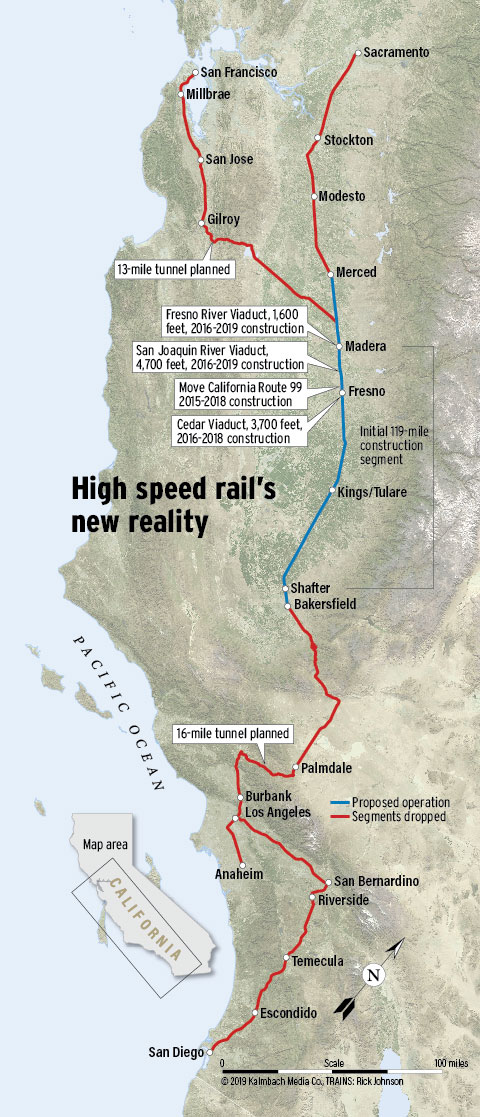
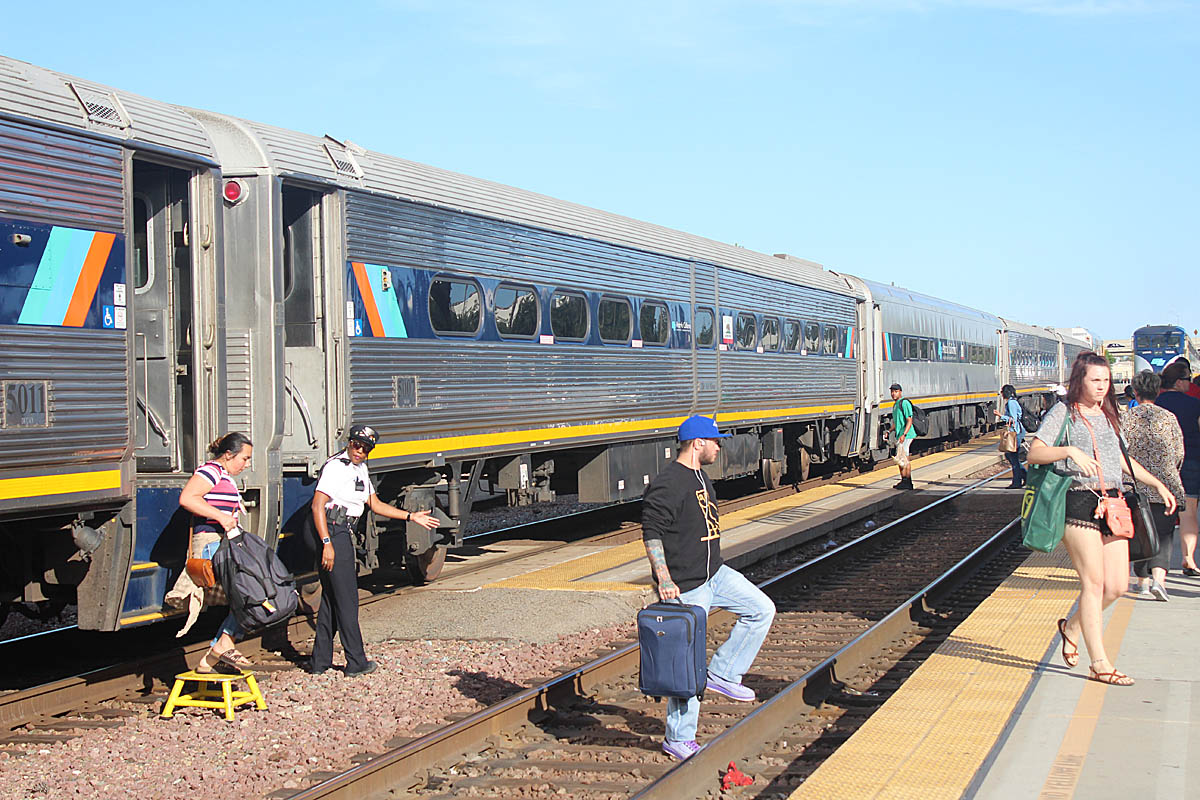

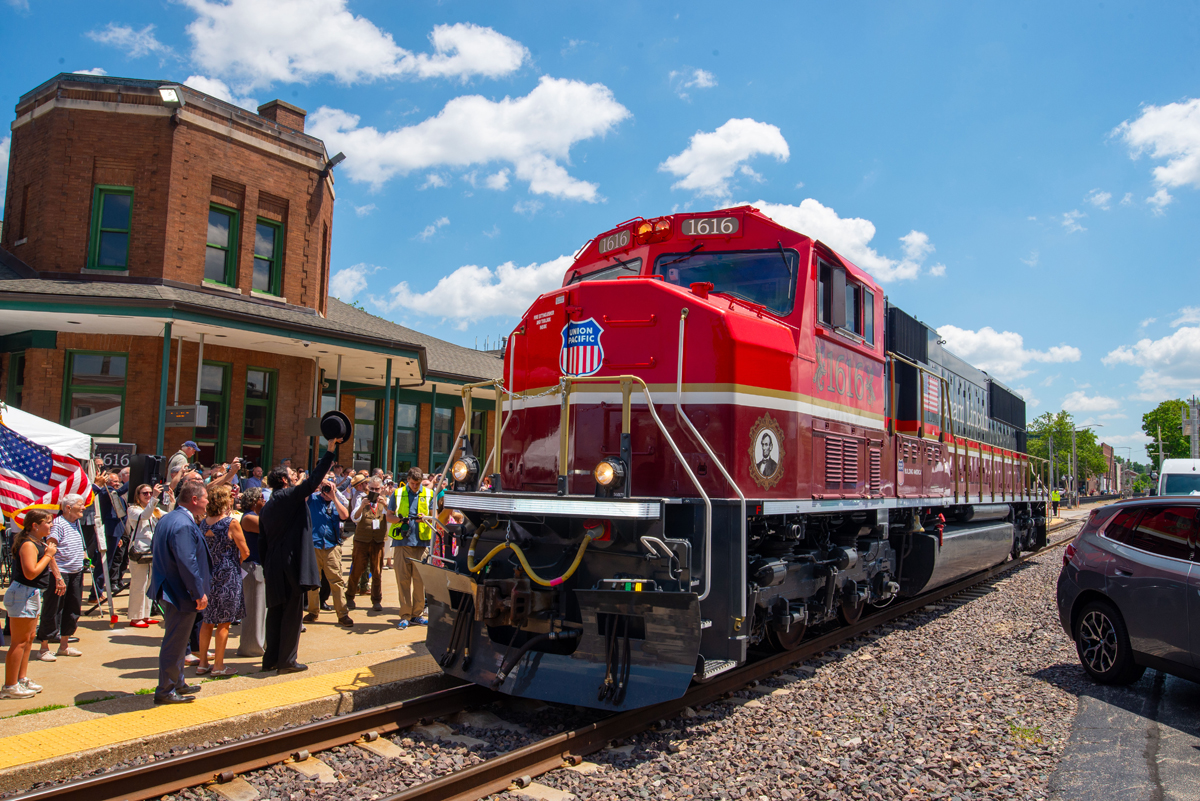
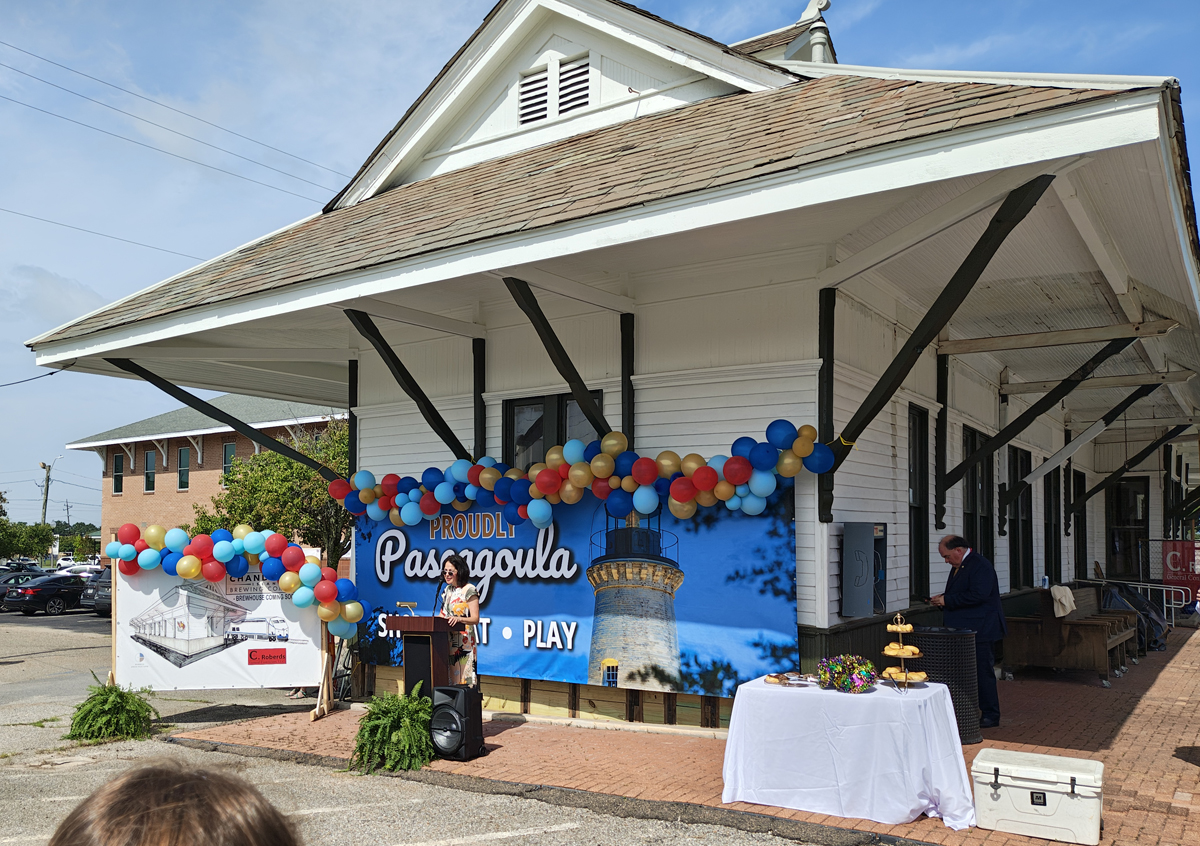
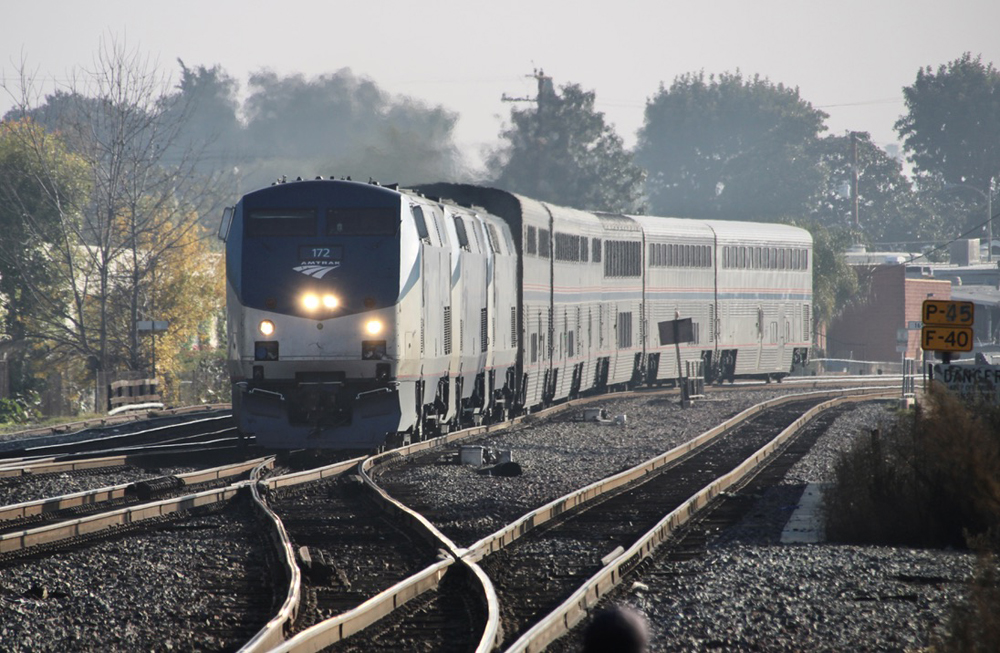
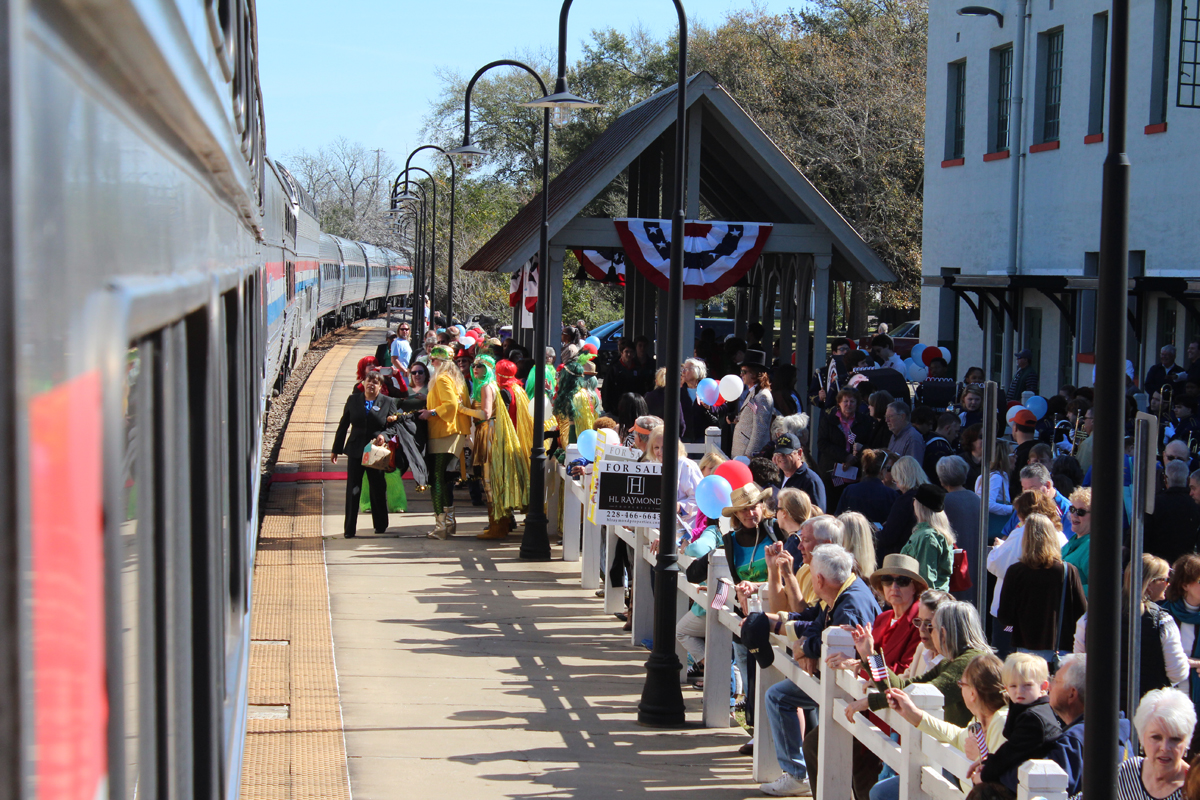




Anna, it’s electric. If Amtrak’s Acela is the template for the new trains, power cars will be at both ends of each train set..
This whole farce was a debacle since day 1, the only ones who benefitted are the ones that got paid alreay, that’s it!!! California is the most irresponsible state at spending, it collects THE most tax money than any other state and YET, theyre the worst at fiscal responsibility. Wasting billions on a project that would cost hundred of millions to operate yearly. All in the red!!!
Since this thread has gone Eco,
Termites produce more methane gas than cows. Most methane is produced by decaying debris from natural sources such as wetlands, rivers and streams, gas hydrates on the ocean floor, and melting permafrost. Termites, surprisingly, are the second largest source of global methane emissions. Next comes the extraction and burning of fossil fuels for electricity and transportation. Then way down the list cows.
The New Jersey coast and all costal wet land are dense with Methane most summer evening, and it really smells. It is from decaying swamp grass. It is so dense that it generates what sometimes look like a blue flame burning it the air out in the distant swamp. Does AOC plan to bury all the salt marsh, which, by the way is a major food source for the ocean fish? Besides, humans have no right to attempt to change the planet climate. I’d like to see the human who is the first to stop one of the 35 active volcanos that blow gas and dirt into the air world around. The earth will handle it. Soon there will be another volcano explosion that will darken the skies and cool the earth off again. Will we then go back to coal burning steam locomotives to warm the air up again?
1. We have little history for this kind of construction, especially in a high land value region, so any cost estimate must be treated with skepticism at best. 2. I view HSR as analogous to the SST/Concorde/Airbus 380: high cost per passenger mile with significant terminal costs. I note that Air France is selling some of their 380 fleet. I wonder if costs with conventional passenger travel are linear, but costs of HSR/ ultrafast or megasize aircraft are exponential. 3. I maintain: grow and run reliable conventional passenger rail to build market share and demonstrate customer demand. ONLY then, consider HSR. The prototype is Brightline nee Virgin trains. We shall see. 4. Anybody notice the safety problem in the photo? Maybe there are extenuating circumstances, but I have to wonder if this usual passenger exiting. Cheers.
Still not clear to me what projects currently underway or planned will now not be done or postponed. The work in the Central Valley will continue, and statewide environmental work will be continued, and we will look for more money to connect north and south.
So is it soil sampling or similar work on the north and south connections that will stop, or what?
If we are to have this global population (and rapidly increasing) and this standard of living (increasing in much of the world), only carbon will power it.
If someone wants different, then the only solution is less people at less standard of living. If the latter, let it start with the mega-mega-ultra billionaires who are the foundation and the guiding force in AOC’s political party.
If 50% of America was a wind farm and 50% of America a solar collection farm, not only would we be desperately short of power but we’d have run out of the required minerals long ago. Plus the energy required to build the things. Plus we’d have nowhere to live and nothing to eat because the farmland would be gone.
Do the math. Drive on I-65 south of Crown Point, Indiana. (Rail fans know that location.) Tell me if all those hundreds of windmills would power the cars and trucks on the “I”. Let alone Gary, Chicagoland, Indianapolis and Champaign/ Urbana.
I’ll never forget when one of the most intelligent men I ever met (and a thoroughly decent and likeable guy) was the first person I’d heard mouth the jihad against fossil fuels. I asked him how he got to Milwaukee (where we were talking) from a nearby suburb. I didn’t bother to ask him how he’d gotten from his Colorado home to Wisconsin.
We know AOC is a Bronx idiot. The real fools are the whole political party she belongs to. The political party of the ultra-rich mega-billionaires who can afford energy at ten times the cost. Except that there will be no energy at any price.
Andrew – Yours is an excellent post first word to last. Yes I noticed this passenger on the verge of hurting himself.
Gerald MacFarlane,
Why don’t we hire the Swiss or some other foreign concern to build major government construction projects in the USA? Because the unions would raise the roof and stop it politically since “big dig” type projects probably couldn’t happen under their oversight. Foreign companies can be brought in as consultants sometimes but the unions won’t agree to them being the general contractor or project manager. Also, its been my experience most foreign companies hate the American civil liability system and don’t want to be part of anything that could end up in court unless they have been relieved in writing of any liability other than for what they actually did wrong. That’s very hard to get from most levels of government in the USA and, in my experience, impossible in CA.
Mr. MacFarlane, I have the following comment about your first paragraph. Where did you get the idea that the fare for the high-speed rail from the Central Valley to the Bay Area could be the same as the fare on the current San Joaquins? It would cost several billion dollars to build high-speed rail from the Central Valley to the Bay Area. Also it seems likely that the cost of operating the high-speed trains would be higher than operating the current trains. This seems to be the type of fuzzy thinking which led to the current debacle.
Good question, how to power it. With all cheap gas, oil, coal & nuclear being banned in 10 yrs by the proposed OCA greenie law, the only thing left is wind & solar. (Dams aren’t green acceptable either) So CA better start covering every available square yard of land with wind turbines & solar panels. And it probably still won’t be enough, but it will be expensive.
Gerald, you say be like the Swiss & just drill thru the mountain. But I think it was Anna that said these areas are seismically active, meaning a lot more engineering & money will have to be put into these tunnels if you don’t want the roof falling in on you. My guess is the same for bridges in these areas.
Alaska has its bridge to nowhere and now California has its railroad to nowhere. But CA does it better as you can get to nowhere faster.
There is something I forgot to add in all this, and it seems it is frequently overlooked.
How is this thing to be powered? California already has an increasingly overtaxed grid and the only remaining nuclear plant is Diablo Canyon. Rancho Seco, Humboldt Bay, and San Onofre have all gone away. Natural gas, in this age of global warming is dicey at best, and of course coal is right out.
I am assuming electrification. Where is the prime mover and what is it?
The above comments are general in nature and do not form the basis for an attorney/client relationship. They do not constitute legal advice. I am not your attorney. Find your own damn lawyer.
Mister Turon:
This proposal has merit. As Silicon Valley marches south, to Gilroy and past, there is need for housing. Further north, San Francisco itself is well-nigh unlivable these days, with insane rents and the hollowing out of a once-vibrant culture.
We have a rough figure (see below, the Semmering Base Tunnel) of what the Gilroy tunnel will cost – in the rough neighbourhood of $5BUS (2019). Building that will get you access from the Central Valley cities to Gilroy and the area to the north, including the San Jose/Santa Clara/Sunnyvale complex. It would have the effect of taking some of the pressure off the housing stocks in the Bay Area, and also enhance the economies of the Central Valley cities.
Further north, if the line (roughly) parallels I-580 it should (I say SHOULD because I don’t have a hard analysis in front of me and am therefore doing this from memory and knowledge of the area) be able to remain on the surface for the most part, except for a possible Trans-Bay Tube. This would reduce the run time from the East Bay (at least) to the Sacramento area to possibly an hour – in which case a commute from Sacramento to Oakland (and possibly San Francisco) becomes viable.
The Transbay Tube used by BART was projected to cost $132M in 1959, ended up costing $180M by 1970. This indicates that a duplicate tube would be in the $1.2B region.
If only the Transbay Tube were to be built it wouldn’t do much for the South Bay or the cities in the southern portion of the Central Valley, but it would certainly help the economies of Yolo and Sacramento Counties as well as taking some of the pressure off the (remaining) housing stocks in San Francisco.
The Brass Ring of course remains a link between San Francisco, Sacramento, and Los Angeles. But there are in fact subsets of the final project which can be built for far cheaper than the entire system which would be of benefit. Just which way our Lords And Masters decide to take us, deponent sayeth not.
The above comments are general in nature and do not form the basis for an attorney/client relationship. They do not constitute legal advice. I am not your attorney. Find your own damn lawyer.
I would say that I respect Phil Berry’s comments, except for one problem…how many people currently ride the San Joaquin’s up and down the valley….those same people I think would rather ride HSR if the pricing was the same. Why wouldn’t you take a trip that is normally measured in hours if you could do it in minutes.
Secondly, to Anna, if the Swiss can complete two tunnels underneath the Alps cheaply and quickly, see the Gothard Base Tunnel which is now open, why can’t the same be done here…because no one in the United States knows how to do it. I say hire the Swiss and let them build it, I can guarantee it will come in on time and within budget.
Third, going under the Tehachapi’s is the wrong route to take into the Los Angeles basin…they should just follow 99/I5 from Bakersfield under the Grapevine. I know people will say there’s no land there for a rail corridor…well I say what’s more important, a more direct route into the populated basin or a roundabout route. Just use eminent domain to take the property you need to fashion the corridor…would the people losing their property be happy about…no, but in this case the needs of the many outweigh the needs of the few.
Funding for continued construction is/was going to come from our very successful cap and trade program on carbon, last year it accounted for $3.3 billion dollars of the budget, which went to other uses besides HSR. Yes, $3.3 B/year isn’t a lot, but you need to leverage that $3.3B/year to obtain other money. Either that or just let the Chinese build it and keep the revenue for the first 30 years of operations.
Newsom is setting himself up to not be re-elected when his term is up in 4 years…because traffic will only worsen between now and then and he.s putting the brakes on one of the biggest ticket items that would help relieve the traffic(which is mostly in the corridors HSR was going to serve at the end points.
They need to connect the Central Valley segment to San Jose — otherwise its only good for Amtrak running its existing trains at 90 to 110-mph. The real benefits come from connecting these regional cities with the Bay Area. If every other country can build HSR, if the Swiss can tunnel like moles — California can at least finish the Bakersfield-Fresno-San Jose-San Francisco segment of the originally planned system. Get that done and running — then focus on getting to LA.
And reform the CaHSRA — make it a state-owned “railway company” (California Central Railway?) and hire JR Central to plan-build-operate it!
Let’s recognize the situation.The California high-speed rail project as currently proposed is dead.
The real reason Governor Gavin Newsom is waffling about whether to end it is that he wants to avoid admitting it is dead until after the next presidential election. The feds made a grant of $3.5 billion. If the project is abandoned with only the completion of a short section between two modest size cities, under the provisions of the grant, the feds are entitled to their $3.5 billion back. Newsom hopes that there will be a new president after the next election who would waive California’s obligation to return the money.
For many years I have been a member of the Train Riders Association of California. The association is the principal advocacy organization representing train passengers in California. Several years ago the association carefully analyzed the current proposal and announced its opposition to the high-speed line as proposed. Among the reasons for the Association’s opposition is that the route is unnecessarily long and expensive. Also because of its very high cost the project is very unlikely to obtain the monies to complete it.
The completion of the short section between Merced and Bakersfield has no real value. There is absolutely no demand for high-speed rail between these two cities. I doubt that there is even one passenger a day the who would pay to take a high-speed train between these two cities. In fact, I doubt that there would be more than one or two passengers a day who would ride the high-speed train between these two cities even if the high-speed rail paid each passenger $50 to take the train!
Merced to Bakersfield is nowhere to nowhere but each (along with Stockton and Fresno) do connect to the rest of the state.
Mister Pins:
Pretty much.
The above comments are general in nature and do not form the basis for an attorney/client relationship. They do not constitute legal advice. I am not your attorney. Find your own damn lawyer.
I’m not a California guy, so educate me. Is Merced to Bakersfield really from nowhere to nowhere?
So instead of aiming for a useful, functionnal system linking metropolitan areas, you’re getting a 200mph system between nowhere and nowhere. Way to go.
I trust Newsom as far as I can throw a piano.
Now I see where the money would have gone. If you look at the map – and you have to know the area (and I do) in question), there are two major tunnels. There is a 16 mile tunnel proposed to get into Los Angeles through the Tehachapis, and there is a 13 mile tunnel planned just south of Gilroy to get out of the Central Valley and into the Bay Area. This last tunnel goes through the Diablo Range.
Both these tunnels are in seismically active regions and would be major proposals on the order of the Semmering Base Tunnel, and the Gilroy tunnel would roughly follow the alignment of SR-152.
I agree from a traffic flow analysis this is the right way to do things – the area between San Jose and Gilroy is booming (at the moment) and considerable northbound passenger traffic originates in Gilroy and points north.
For comparison, the Semmering Base Tunnel (which according to Wikipedia is still under construction) has so far cost EU3.3 billion (2016 euros).
There are cheaper ways into both the Los Angeles basin and the Bay area. The problem is there is no real cheap, fast way.
Now we know what is going on. I won’t say there is no pork barrel involved. But there are major technical hurdles to deal with and they ain’t cheap.
The above comments are general in nature and do not form the basis for an attorney/client relationship. They do not constitute legal advice. I am not your attorney. Find your own damn lawyer.